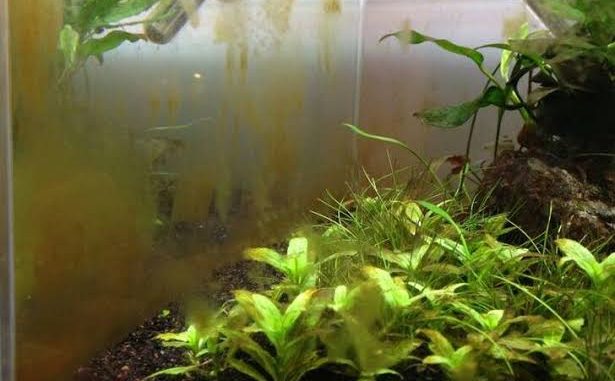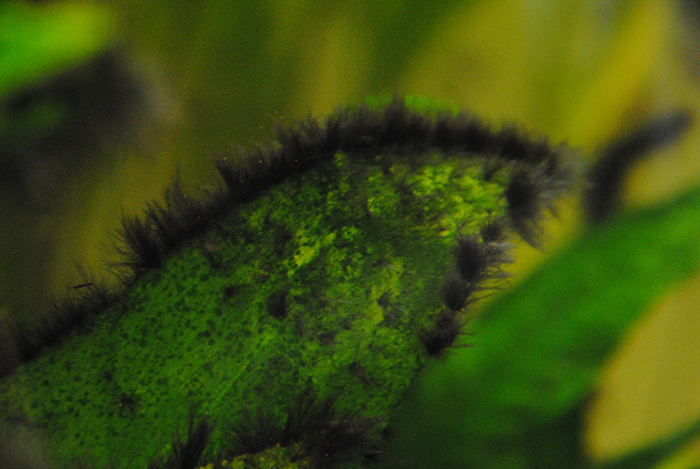
Every freshwater aquarium will be troubled by an infestation of algae at some stage. Where did the algae come from? What type of algae do I have? Why is my algae out of control? How do I get rid of the algae? Lets answer some of these questions.
What are Algae?
Botanically, algae belong to the division of plant kingdom known as Thallophyta, which they share with fungi. Algae are simple plants that range in form from microscopic unicellular types to gigantic seaweeds that may reach and length of 70 metres (230 feet.) We will concentrate on the smaller end of this size range.
Important factors contributing to the tenacity and widespread distribution of algae is their incredible reproductive capacity and their ability to survive in a viable state in difficult environments and over long periods of time. Many species of algae can exist in a seemingly poor state for many years. Algae spores can be carried on air currents through the atmosphere and may germinate successfully on their return to a favourable environment after a period of several years !!
Types of algae
Algae have adapted to grow in all types of water; flowing or stagnant; salt and fresh; warm and cold; clean and badly polluted. Most algae varieties exist underwater.
In the aquarium they may be found floating on the surface, suspended in water, or growing in a tangled mass on rocks, plants, gravel or other tank equipment.
The algae most likely to trouble freshwater aquarists are the following groups:
- Green Algae (Chlorophyceae)
- Diatoms (Brown Algae) (Bacillarophyeae)
- Red Algae (Rhodophyta)
- Whip Algae (Euglenophyceae)
- Blue Green Algae (Myxophyceae)
Green Algae
This class contains a large proportion of the types encountered in freshwater aquariums. In these algae the green pigment chlorophyll is not masked by the other pigments, as it is in other groups.

The unicellular green algae are not visible individually to the naked eye. In large numbers they will appear as a green cloudiness in the water. Typical examples are Chlamydomonas and Chlorella, which forms a green film on the aquarium glass.
The filamentous green algae, in which the individual cells are arranged and form long chains, cause frequent problems in aquariums. They may occur as a tangled mass as in Spirogyra, or as green strands attached to rocks and plants, as in Oedogonium and Vaucheria.
Diatoms (Brown algae)
Diatoms appear in freshwater aquariums when phosphates and nitrates levels are high. They form a brown slime on the gravel, rocks and tank glass, and can even discolour the water in heavy infestations.
I find this algae one of the easiest to remove. They are keenly eaten up by algae eating fish or shrimp. And they are generally easily removed off glass, plants or ornaments with an algae remover pad and gravel vacuum.
Red Algae
Red Algae are rare in freshwater aquariums. Their red colour comes from the presence of the pigment phycoerythrin; this pigment reflects red light and absorbs blue light. … Some rhodophytes have very little phycoerythrin, and may appear green or bluish from the chlorophyll and other pigments present in them. Most red algae are also multicellular and reproduce sexually.

In the freshwater aquarium, the variety of Red Algae widely known as Black beard algae (or black brush algae) (Audouinella sp., Rhodochorton sp.) is the most common. BBA features a bush-like growth and consists of many short, densely growing filaments. They grow from one common point. Their forms make them look like a tiny brush. Their colour may vary from dark green over gray to a deep black. Exactly like staghorn algae, brush algae usually grow on the equipment, the hardscape and on the leaf margins of slow-growing plants. There they are anchored quite strongly, and entirely removing them mechanically (by plucking them off) is almost impossible. You can find out how to remove this algae by reading this article.
Whip Algae
As their name suggests, the unicellular species in this group have flagellate, or tiny whips, to propel themselves through the water.
Whip Algae rarely cause problems in aquariums because they thrive in such polluted conditions that most other organisms have already died.
Blue-green algae
These organisms share many characteristics of both algae and bacteria, and are now placed in a category of their own.
In the aquarium they appear as dark green gelatinous sheets that creep over rocks and plants until, unchecked, they can smother everything in the tank.
They thrive in bright light and high nitrate and phosphate levels, in both acid and alkaline water. They can produce toxins that are lethal to aquarium fishes.
How do algae reach the aquarium?
In real terms, it is impossible to stop algae reaching the aquarium. As we have seen,the air is filled with algal spores that will germinate on reaching a suitable body of water – including the home aquarium. Algae or Algae Spores can be introduced on new plants, snails and even in the faeces of new fish. Tank furnishings and equipment will also carry algae when moved from one aquarium to another.
The causes of excess algae growth in the aquarium
Once present in the aquarium, algae will grow to excess in fairly well defined conditions. The most clear cut cause of excess algal growth in exposure to sunlight; the relative brightness and wide spectral ‘richness’ of sunlight spiralled to ‘bloom’ into life.
The same effect occurs, although less markedly, if the artificial illumination is too bright or left on too long – this can be particularly accelerated by the recent introduction of some LED lights that are fantastically brighter than its predecessors.
High levels of nitrates, phosphates, sulphates and carbonates act as nutrient ‘fuel’ to such expansion.
The control of algae
Based on the above causes, the basic strategy for controlling algal growth clearly resolves around the level of light given to the aquarium.
- Ensure that the aquarium is not exposed to sunlight.
- Illuminate the aquarium for no longer than 7 hours a day.
- Carry out regular partial water changes to keep the level of nitrates etc down to acceptable limits.
- Keep the aquarium well planted.
- Once underwater plants are thriving, introduce floating aquarium plants to deter the growth of algae.
- Inspect all rocks, plants, ornaments for algal filaments and treat and/or remove as necessary.
- Introduce algae grazing fish such as bristlenose catfish, plecos, sucking catfish, siamese flying fox or otocinclus.
- Use a good algicide if none of the above measures make any improvement. Algicides are available as liquid or tablet. Ask us what’s best for your particular problem. Never overdose as this may kill your fish.
